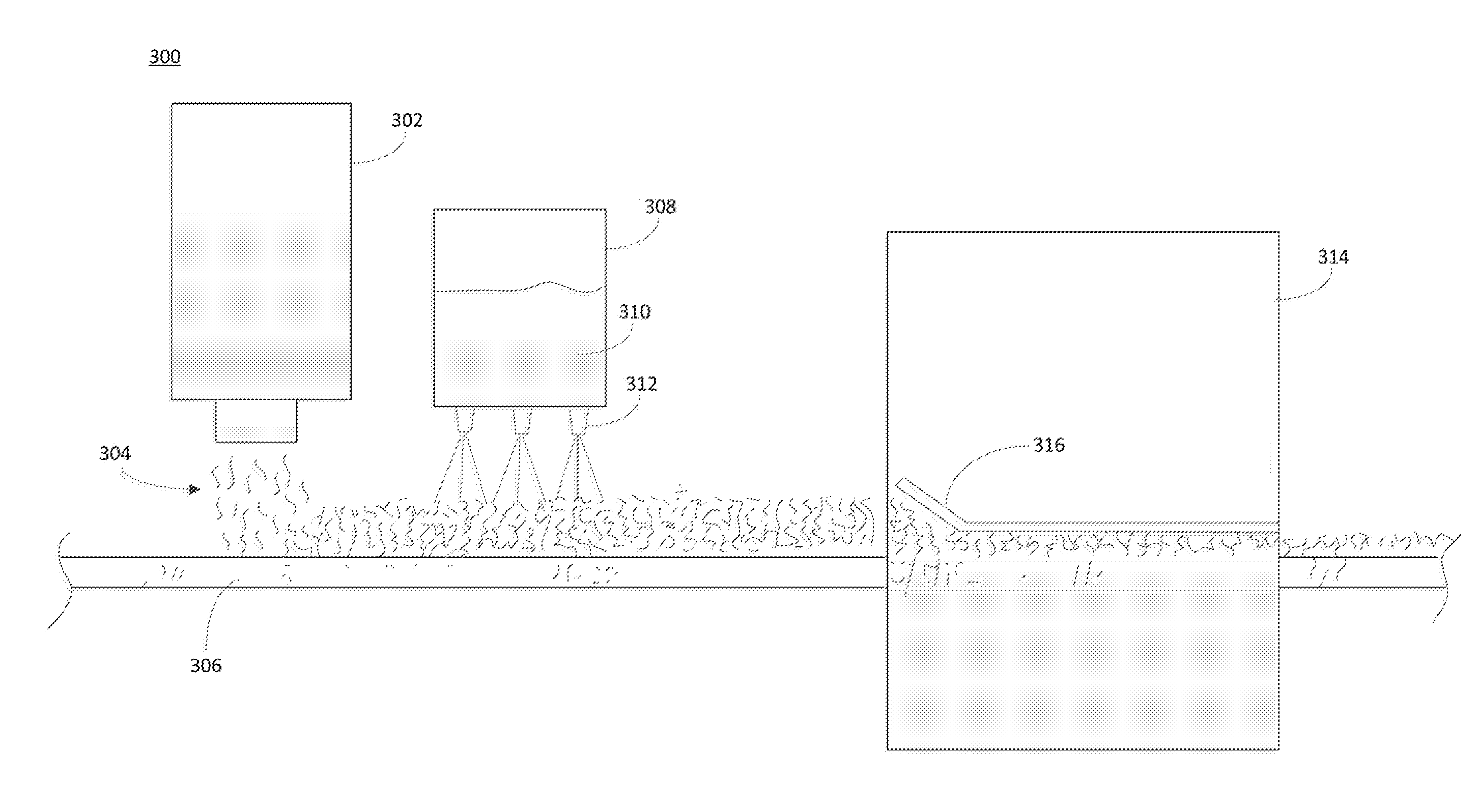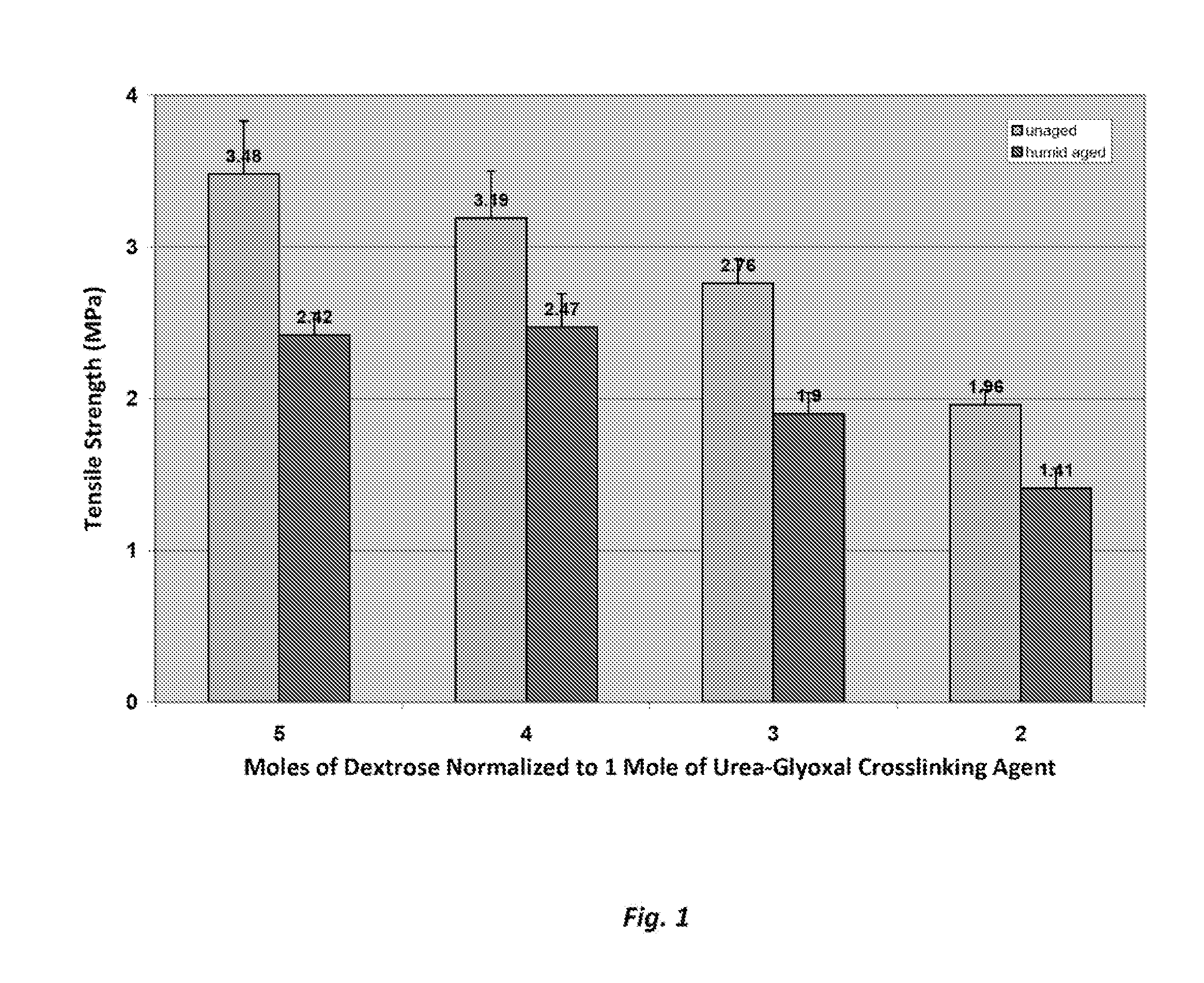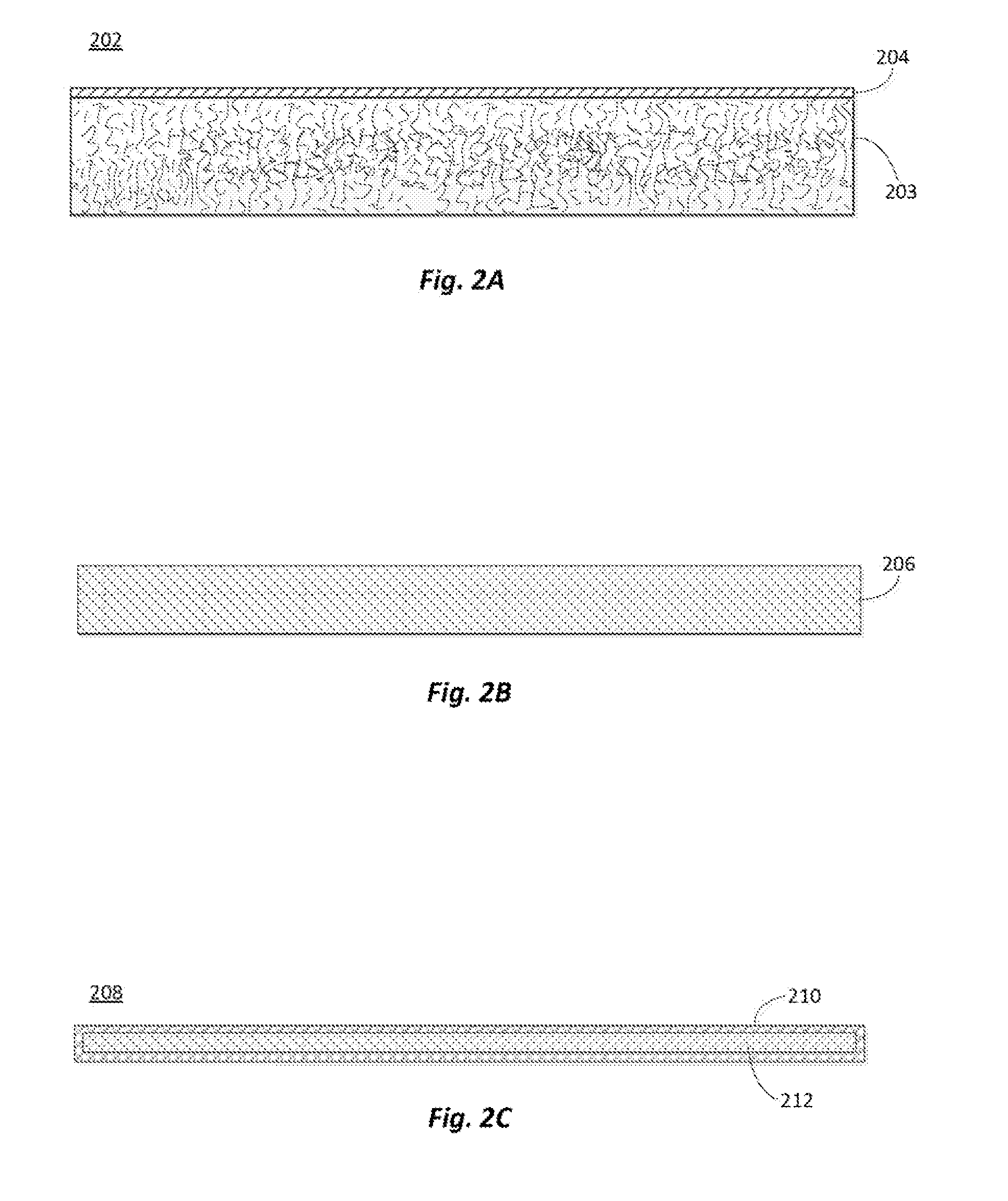Formaldehyde free binder compositions with urea-aldehyde reaction products
a technology of urea-aldehyde and reaction products, which is applied in the field of formaldehyde-free binder compositions with urea-aldehyde reaction products, can solve the problems of increasing the use restriction of carbohydrate-containing binders, excessive particulates, and brittleness of many types of binders, so as to facilitate the curing of binder and formation, and reduce sugar
- Summary
- Abstract
- Description
- Claims
- Application Information
AI Technical Summary
Benefits of technology
Problems solved by technology
Method used
Image
Examples
example 1a
Tensile Strength Testing of Dextrose Binder Composites
[0053]Comparative tensile strength tests were conducted on composites made with an exemplary dextrose / urea-glyoxal binder composition and composites made with a standard commercial polyacrylic binder composition. The dextrose / urea-glyoxal composition was prepared by mixing 60 g of urea, 145 g of a 40 wt % solution of glyoxal, at a temperature of 90° C. for about 120 minutes. The urea and glyoxal react to form crosslinking agents for the binder composition, including cyclic urea-glyoxal compounds (e.g., 4,5-dihydoxyimidazolidin-2-one). Next, 918 g of water and 989 g of dextrose monohydrate (900 g active) were added to the reacted urea-glyoxal solution to form the uncured binder composition for making the dogbone composite. To this solution was added 76.4 g ammonium sulfate as a catalyst. The uncured polyacrylic binder composition was made by mixing a commercial polyacrylic acid (QRXP-1765 acrylic resin from Dow Chemical) with trie...
example 1b
Tensile Strength Testing of Fructose / Dextrose Binder Composites
[0057]Additional tensile strength tests were conducted on composites made with exemplary binder compositions that included combinations of fructose and dextrose reacted with a urea-glyoxal crosslinking agent. A first fructose+dextrose / urea-glyoxal binder composition was prepared by mixing 60 g of urea, 145 g of a 40 wt % solution of glyoxal, at a temperature of 90° C. for about 120 minutes. The urea and glyoxal react to form crosslinking agents for the binder composition, including cyclic urea-glyoxal compounds (e.g., 4,5-dihydoxyimidazolidin-2-one). Next, 918 g of water and 989 g of 42 wt. % fructose and 55 wt. % dextrose monohydrate were added to the reacted urea-glyoxal solution to form the uncured binder composition for making the dogbone composite. To this solution was added 76.4 g ammonium sulfate as a catalyst. A second fructose+dextrose / urea-glyoxal binder composition was prepared using the same components and pr...
example 2
Preparation of an Exemplary Glass-Fiber Composites
[0058]A glass-fiber composite was made from a dextrose / urea-glyoxal binder composition and a nonwoven glass fiber mat. Preparation of the binder composition started by mixing 60 kg or urea into a 145 kg aqueous glyoxal solution (40 wt. % glyoxal (58 kg on dry basis)) at room temperature until the urea dissolved. The urea-glyoxal solution temperature was then increased to 80° C. and kept at 80-85° C. for 2 hours while stirring the solution at 500 rpm to facilitate the reaction of the urea and glyoxal. At the end of the reaction period, a 57 wt. % solution of the urea-glyoxal crosslinking agent was formed.
[0059]918 kg or water and 989 kg of dextrose monohydrate (900 kg active) were added to the crosslinking solution and the combined mixture was stirred until the dextrose dissolved. The mole ratio of urea:glyoxal:dextrose in the solution was 1:1:5. 76.4 kg of ammounium sulfate was added to the solution as a catalyst, and stirred until t...
PUM
| Property | Measurement | Unit |
|---|---|---|
| density | aaaaa | aaaaa |
| temperature | aaaaa | aaaaa |
| temperature | aaaaa | aaaaa |
Abstract
Description
Claims
Application Information
 Login to View More
Login to View More - R&D
- Intellectual Property
- Life Sciences
- Materials
- Tech Scout
- Unparalleled Data Quality
- Higher Quality Content
- 60% Fewer Hallucinations
Browse by: Latest US Patents, China's latest patents, Technical Efficacy Thesaurus, Application Domain, Technology Topic, Popular Technical Reports.
© 2025 PatSnap. All rights reserved.Legal|Privacy policy|Modern Slavery Act Transparency Statement|Sitemap|About US| Contact US: help@patsnap.com



